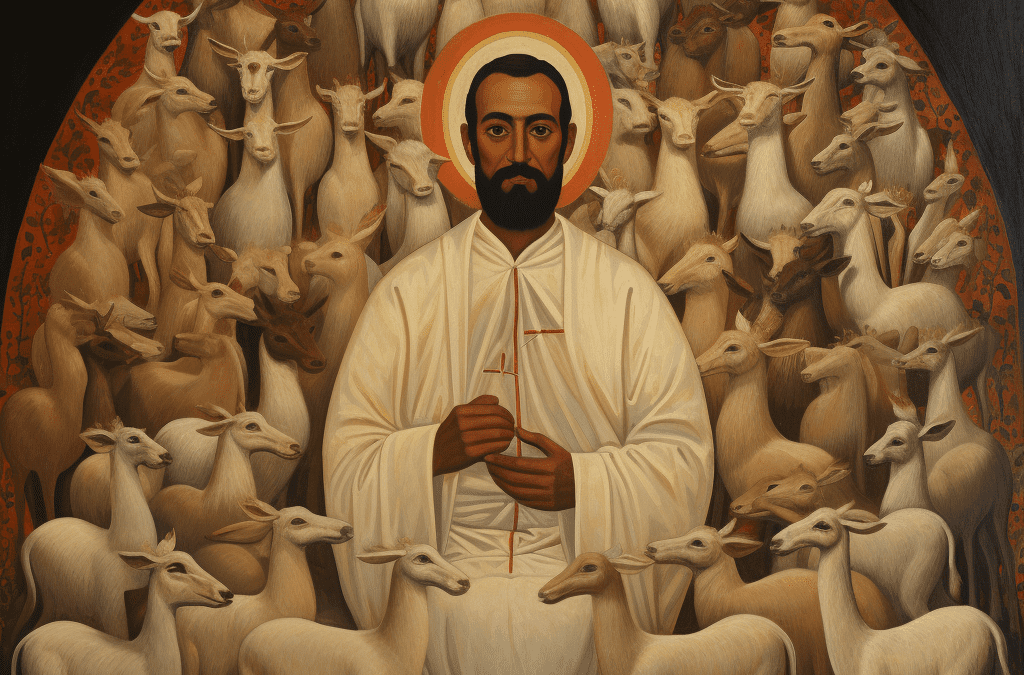A history of the fight for human freedom would fill a colossal book. And in its pages, the tale of Simran would merit a spot.
His story could fit next to the account of the Africans on the slave ship La Amistad. In 1839, as they were being transported across the Atlantic Ocean to a life of slavery, the Africans revolted against their captors. Instead of being hailed as liberation heroes, they were tried and convicted as murderers in a U.S. court.
Or we would place Simran’s tale alongside that of the natives of Brazil enslaved by 16th-century Portuguese conquistadors to work on their sugar cane plantations. The invaders gave vanquished tribes a simple choice: servitude or execution. It turned out to be a trick question, for both choices led to an early death.
Simran’s tale comes from India. The owner of a rice mill enslaved his village to process rice for sale in the market. The slaves laboured eighteen hours daily and were prohibited from passing beyond the walls of the mill without supervision. After years of relentless oppression, Simran’s wife broke down one day and killed herself. Disconsolate over his loss, Simran threw caution to the wind. He saw a gate in the rice mill left open one day and bolted.
The owner of the rice mill did not treat insubordination lightly. He sent bounty hunters after Simran and they captured him after only a couple of days. Once they brought Simran back to the rice mill, the owner gathered all the slaves into an assembly in the centre of the mill compound. For their edification, he used a cane to beat Simran within an inch of his life. The owner then chained the unconscious Simran to a wall in the slaves’ living quarters. And that became his bed for the rest of his days at the rice mill. He worked his eighteen hours, and then was ushered back to the chains.
Lamentably, Simran’s tale would not find a place in our history book, for it does not belong to the past. I met him in India in 2006 as I travelled across five continents tracking the proliferation of human slavery. During my journey, I encountered more tragic tales than I felt capable to absorb. Simran is only one of an estimated 27 million individuals who live in bondage in our own time.
It was 200 years ago that the British Parliament abolished the slave trade, in no small part due to a campaign led by the parliamentarian and reformer William Wilberforce. The historic legislative vote in 1807 marked the beginning of the end of government-sanctioned or legalized slavery in our world.
Yet Wilberforce’s campaign did not bring an end to slavery.
Today’s slavery boom
The dark side of globalization has fueled a surge in human trafficking and sexual slavery over the last decade. Its growth now rivals the money generated by criminal activity in international drug and armaments trades.
Human trafficking generates US$31 billion annually. Tragically, there are more people enslaved today than at the height of the African slave trade two centuries ago. Half of those bound in slavery today are children.
To write my book, Not for Sale (2007), I conducted hundreds of interviews with ex-slaves from many countries, including Cambodia, Thailand, Uganda, Peru, Moldova, and even the United States. I encountered a common storyline time and time again. Traffickers preyed on the vulnerable—those who had no access to justice. They took their victims to unfamiliar destinations where in the absence of legal protections and family networks their captives could more easily be kept in slavery. The consistency in the storyline points to the overarching mechanisms of a global industry.
Like any other commercial market, the slave trade is driven by the forces of supply and demand. Criminal agents make handsome profits from unpaid labour. Using slaves makes it cheaper to produce goods or, in the case of sex slavery or domestic servitude, to offer valued human services. Due to these financial advantages, slaveholders can compete successfully in almost any market. Their profit margins rise as high as the demand will bear.
The slave trade operates most efficiently when it is hidden from sight. Once a trafficking ring is exposed to the public eye, the slaveholders become more vulnerable to arrest and slaves are more likely to be rescued. Moreover, clients who engage in commercial transactions with slaveholders—for example, a john who visits a massage parlor or a retailer who sells dresses made in a slave-labour garment factory—find comfort in covert conditions. They would be less likely to engage in business once the slave operation had public scrutiny.
That is why the Not For Sale Campaign (see our website at notforsalecampaign.org) turns to students and professors to play a key role in the fight against modern slavery. Imagine the impact if university research centres could spring up all over the world to identify and monitor trafficking activity in their regions. What better site for this kind of study than colleges and universities? A growing number of schools in the United States already requires their students to participate in “service learning” as part of their degree programs.
Some students, working in collaboration with their professors, could use their service hours to conduct community-based research work on human trafficking. It would not be that difficult to conduct interviews with community residents, local police, social workers, probation officers, migrant workers, or a host of others to collect local intelligence on trafficking. An annual report of updated data could be supplied to local service agencies, government officials, and law enforcement agencies for appropriate action. The research centre also would want to partner with the local media to feature latest trends and significant exposure of trafficking sites.
Students at the University of San Francisco piloted this project in the 2006-2007 academic year and presented startling results about the prevalence of slavery in northern California. Because of the student research and its public dissemination, law enforcement agencies in northern California designed new enforcement strategies to intervene in trafficking cases.
Not For Sale has launched two web platforms for investigate research, to further inspire action against slavery. The Slavery Map (online at SlaveryMap.org) allows students and other researchers to document the results of investigations wherever on the globe they have found slavery. Free To Work (online at FreeToWork.org) offers an open platform for research on how companies use labour in the production of their products.
We may not realize how each of us drives the demand for slavery each and every day. Kevin Bales (see freetheslaves.net) expresses well how our shopping implicates us: “Slaves in Pakistan may have made the shoes you are wearing and the carpet you stand on. Slaves in the Caribbean may have put sugar in your kitchen and toys in the hands of your children. In India, they may have sewn the shirt on your back and polished the ring on your finger.”
The Free To Work platform aims to make those links more transparent, and thereby fuel a consumer movement to buy “slave free” products. Knowledge can liberate, and students have the opportunity to deploy their studies in powerful ways.
The student battalion
Students can get involved in lots of other abolitionist activities as well. Some build local coalitions that support recently emancipated slaves and others volunteer in shelters. The Not For Sale Campaign can supply “demand reduction materials”—coasters for bars and nightclubs, sleeves for coffee cups, get-help cards for high-risk labour sites—that students can distribute in their region. Reluctant witnesses and frightened victims come forward when they learn about safe places to tell their story.
Using school sports events can be an effective way to generate more awareness and raise support for abolitionist efforts. Our Free To Play activities help athletes and fans alike realize that playing a game is a celebration of freedom. After all, millions of kids in the world are not “free to play.” Imagine the power of making a pledge to tie athletic results—number of goals scored or baskets made—to give financial support for a school for former child soldiers in Africa or a dorm for emancipated sex slaves in Thailand.
The Book of Ecclesiastes is an extraordinary piece of ancient wisdom literature. The author poignantly expressed the desperation of the powerless: “I saw all the oppressions that are done under the sun. And behold, the tears of the oppressed, and they had no one to comfort them! On the side of their oppressors there was power, and there was no one to comfort them” (Ecclesiastes 4:1).
Twenty-seven million individuals live as slaves at this moment. Power is on the side of the oppressor. But a wave of abolitionists is on the rise. They will wipe away the tear of the oppressed and deliver justice to the oppressor.
The movement gains momentum each time one more person takes up the struggle. Won’t you join?

